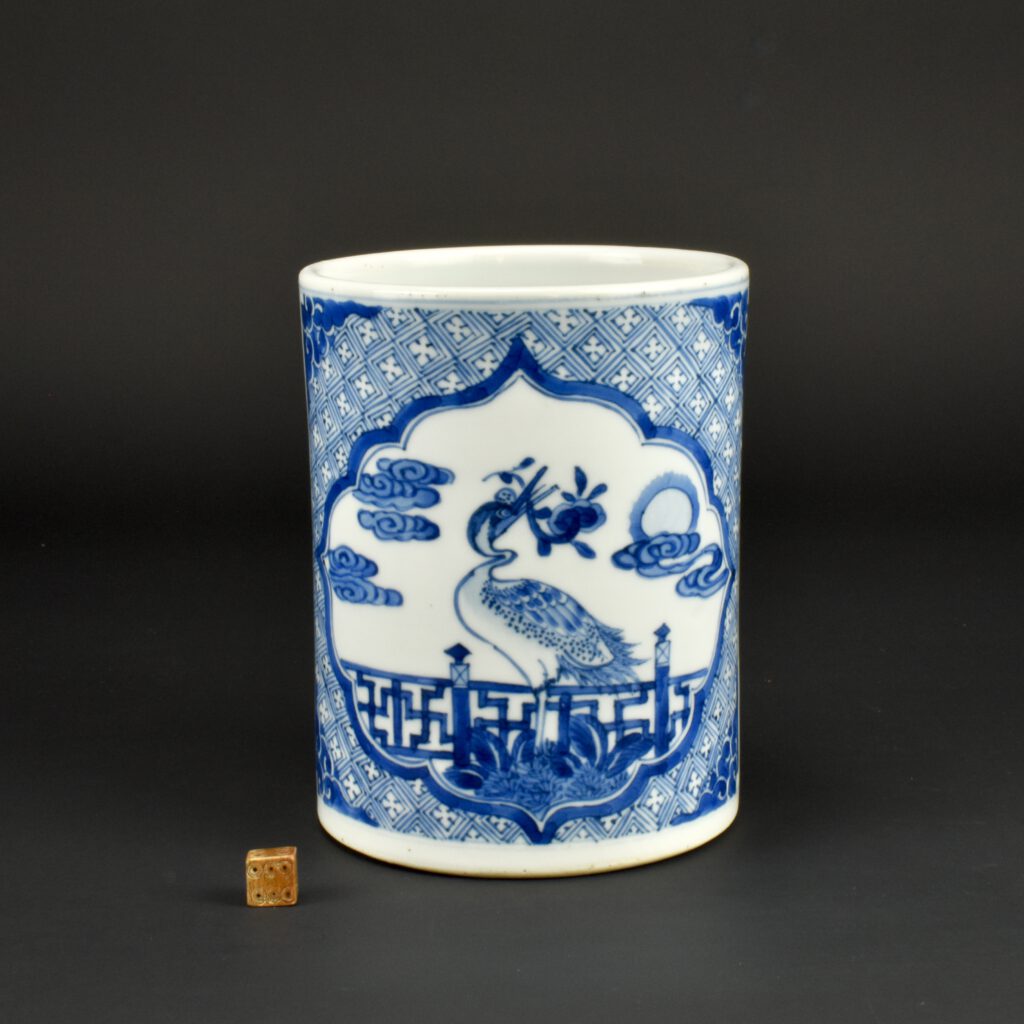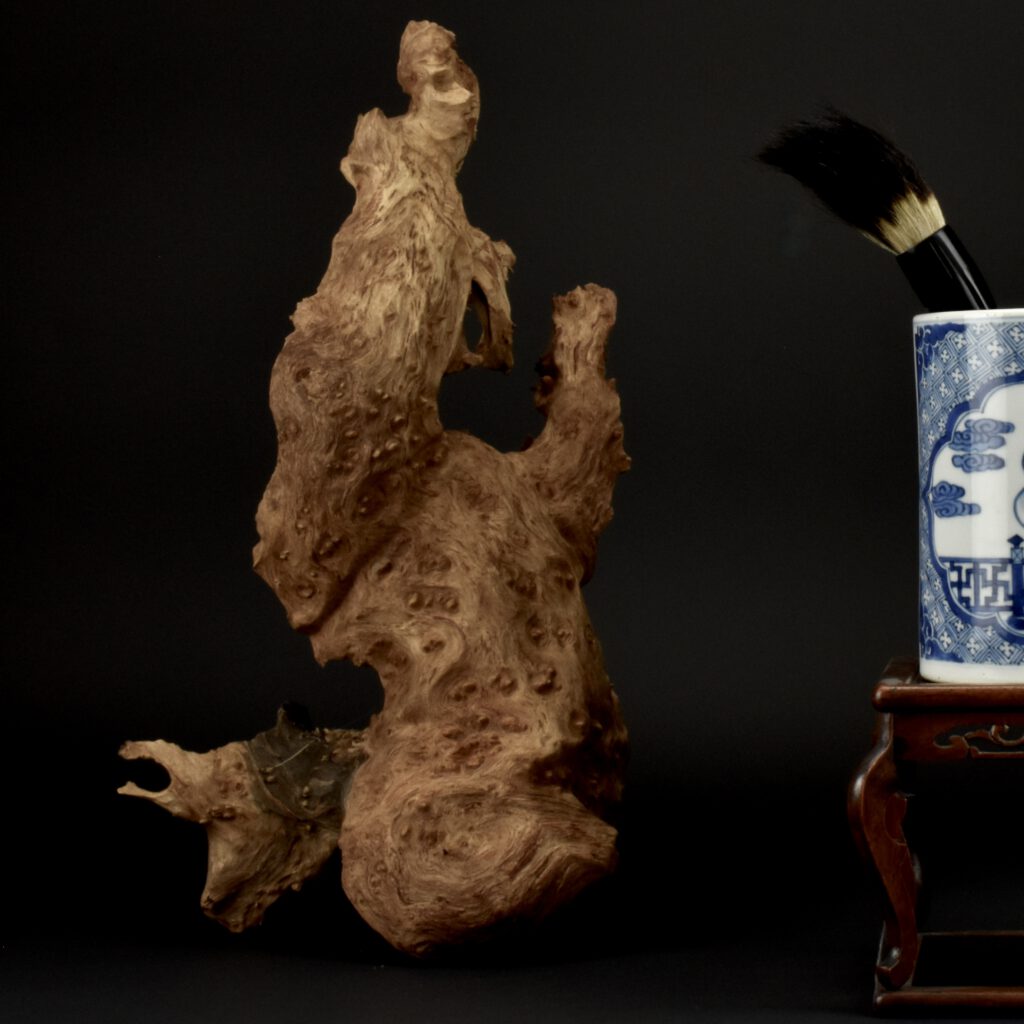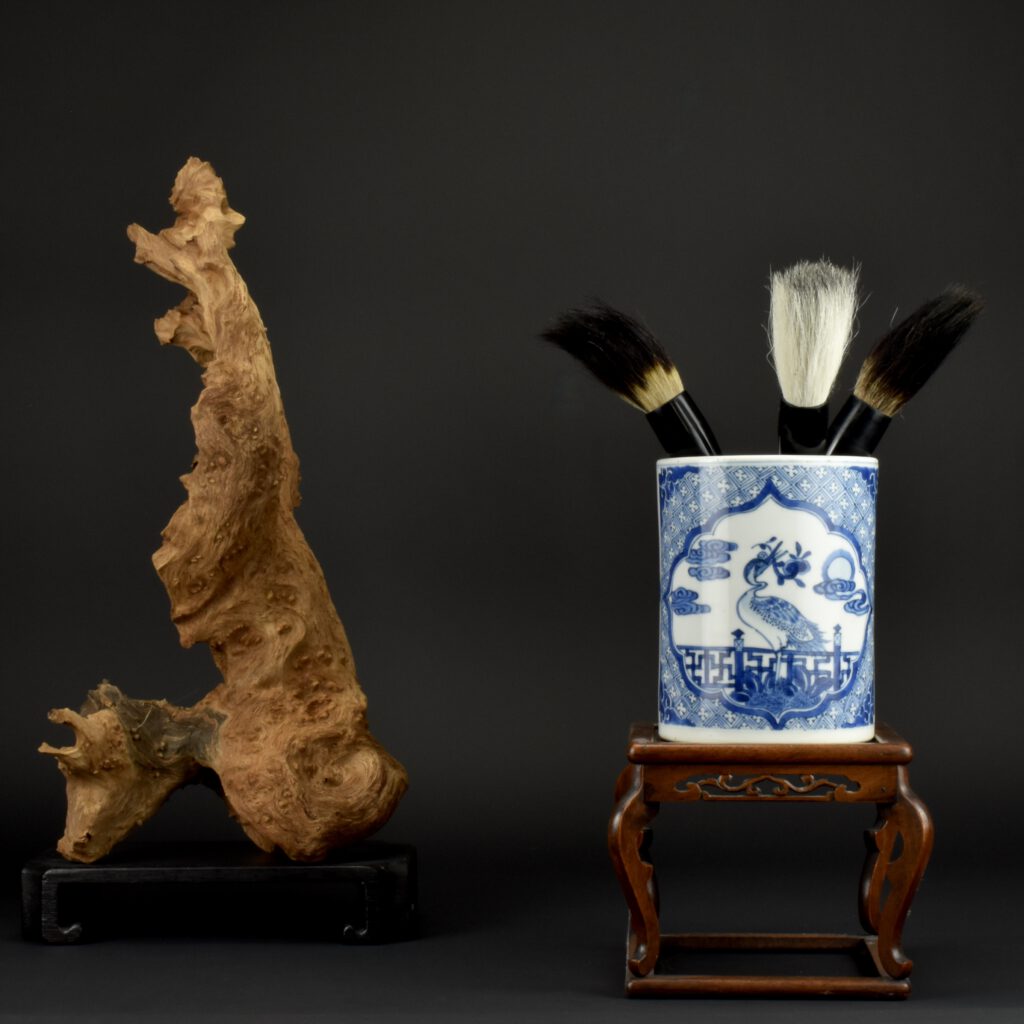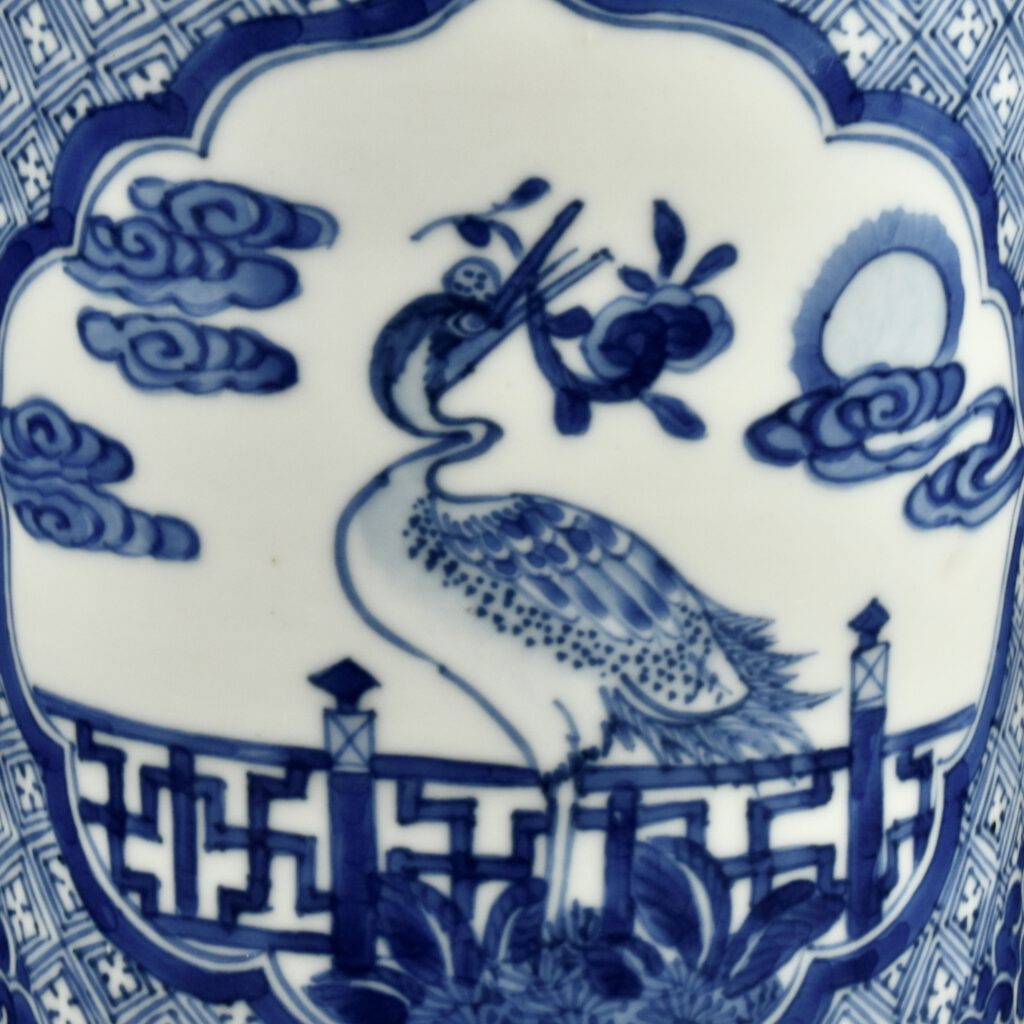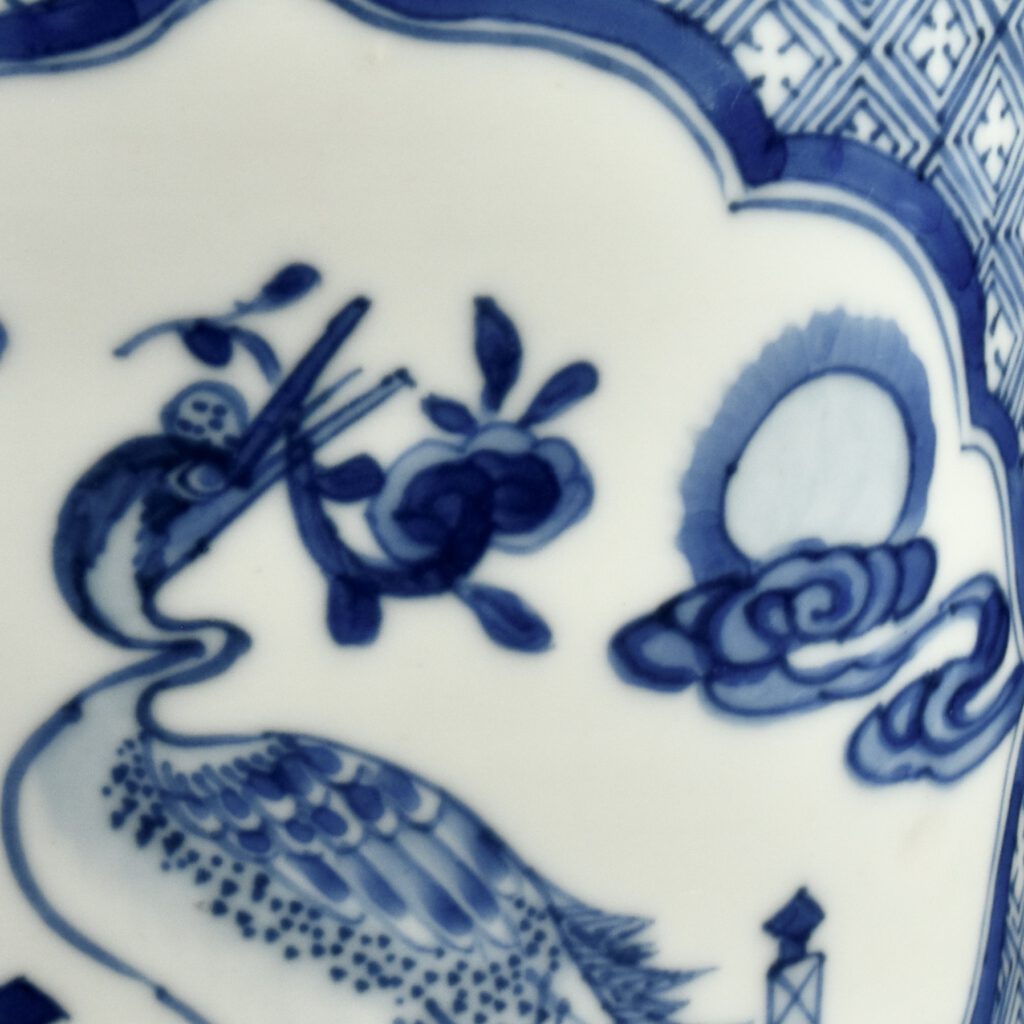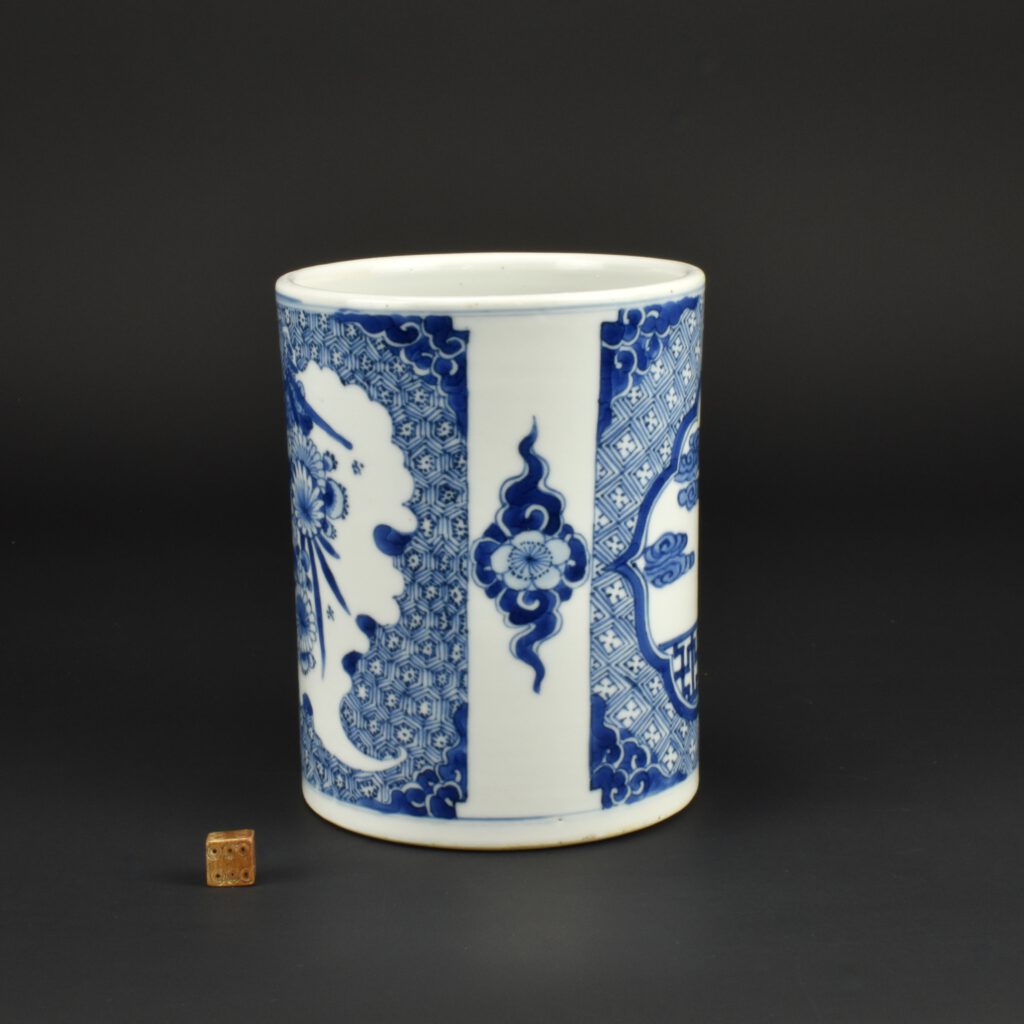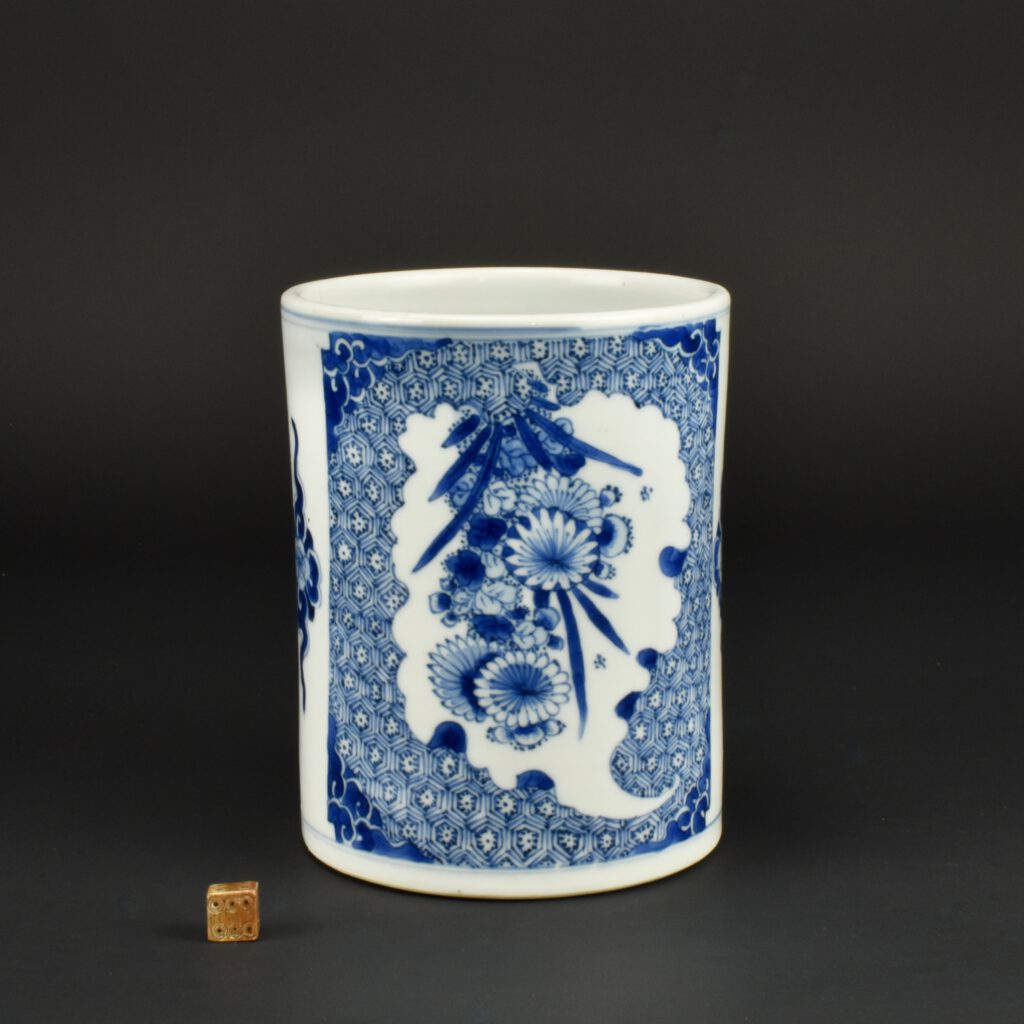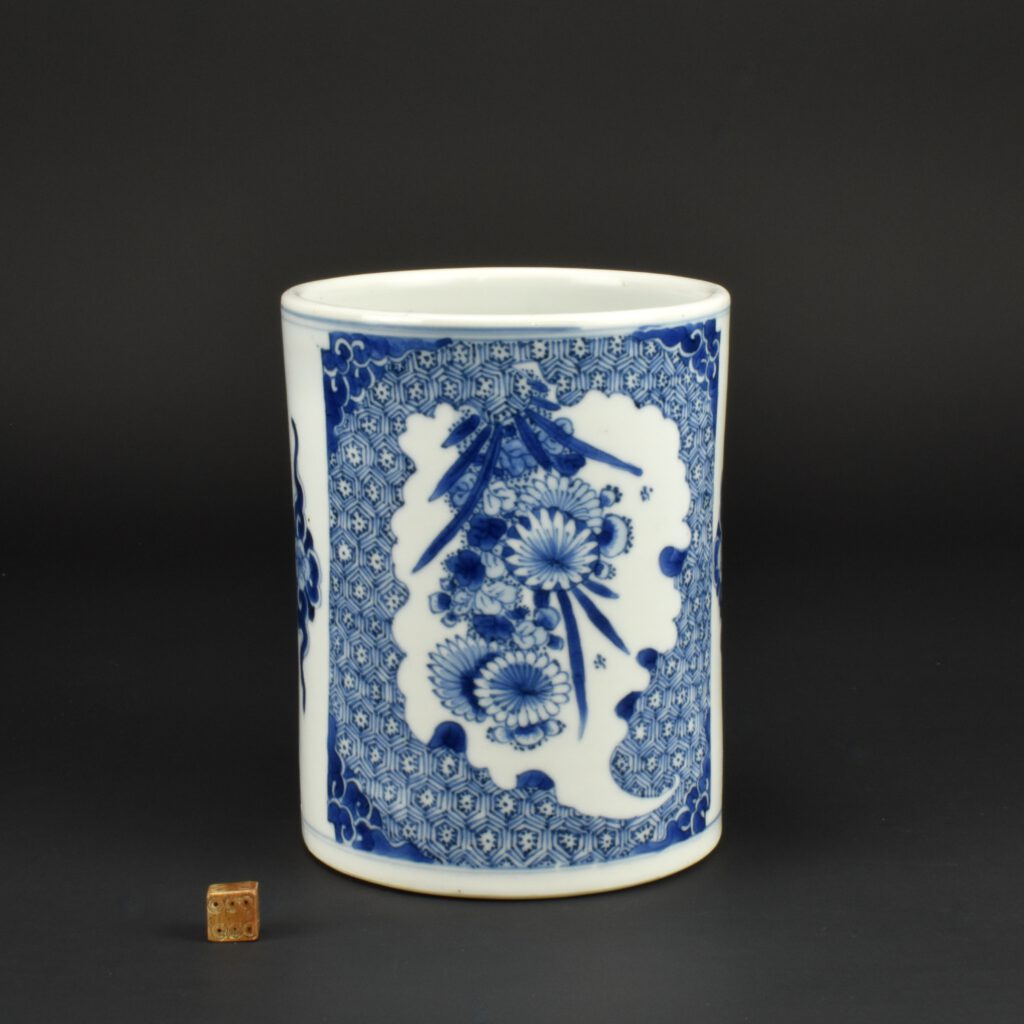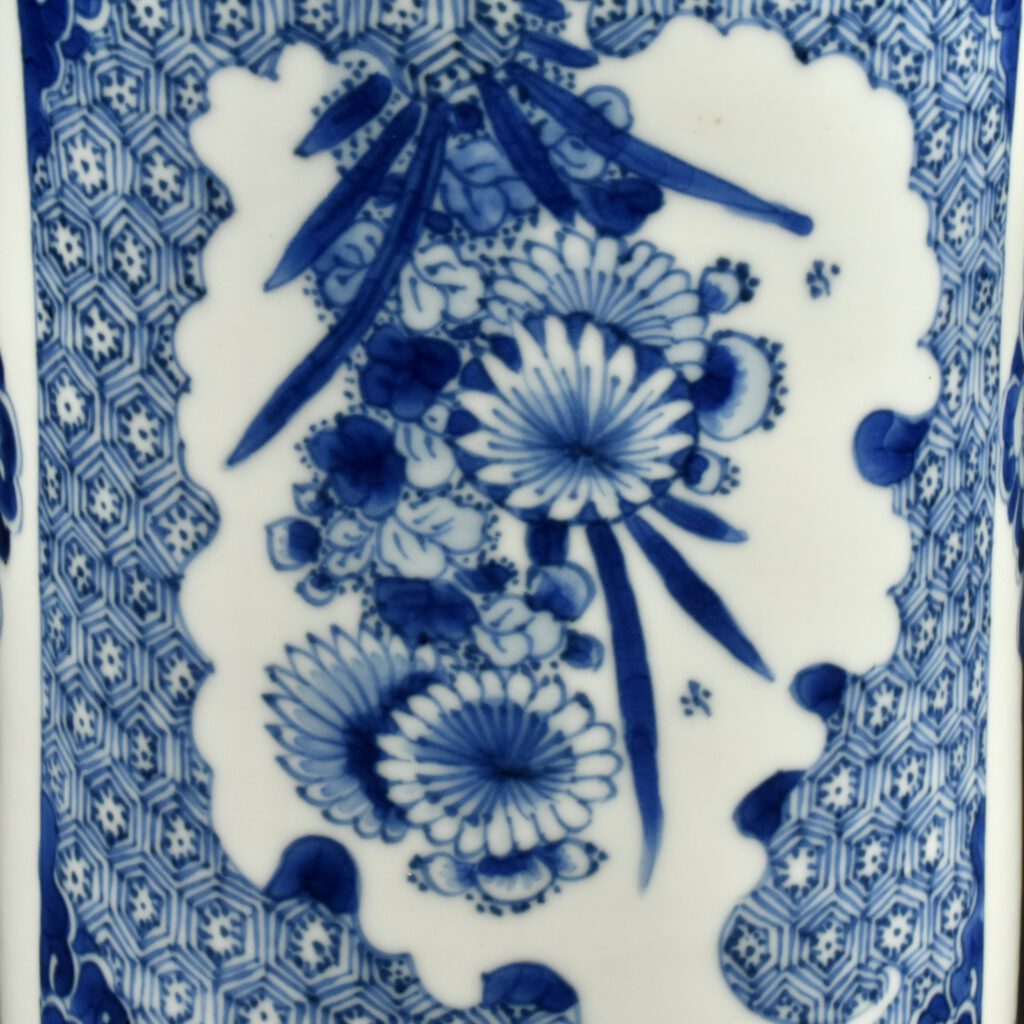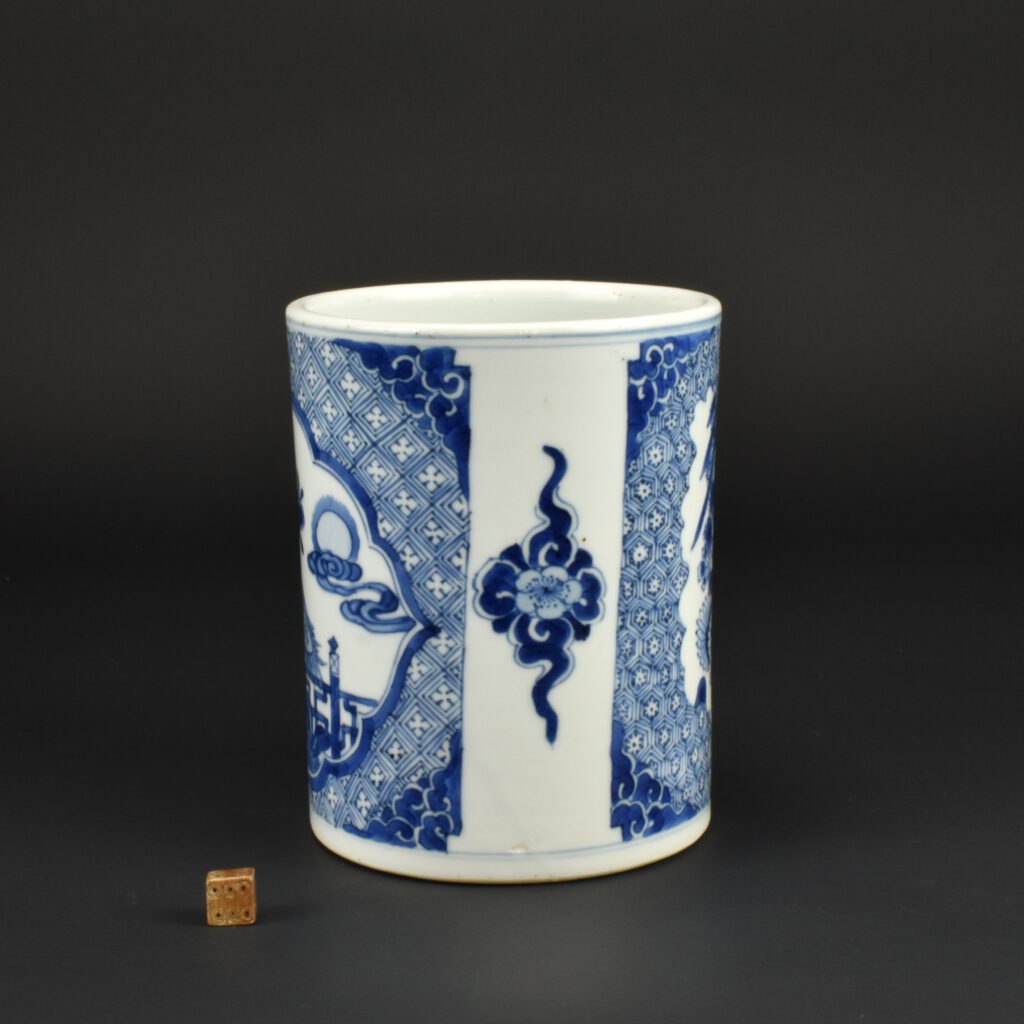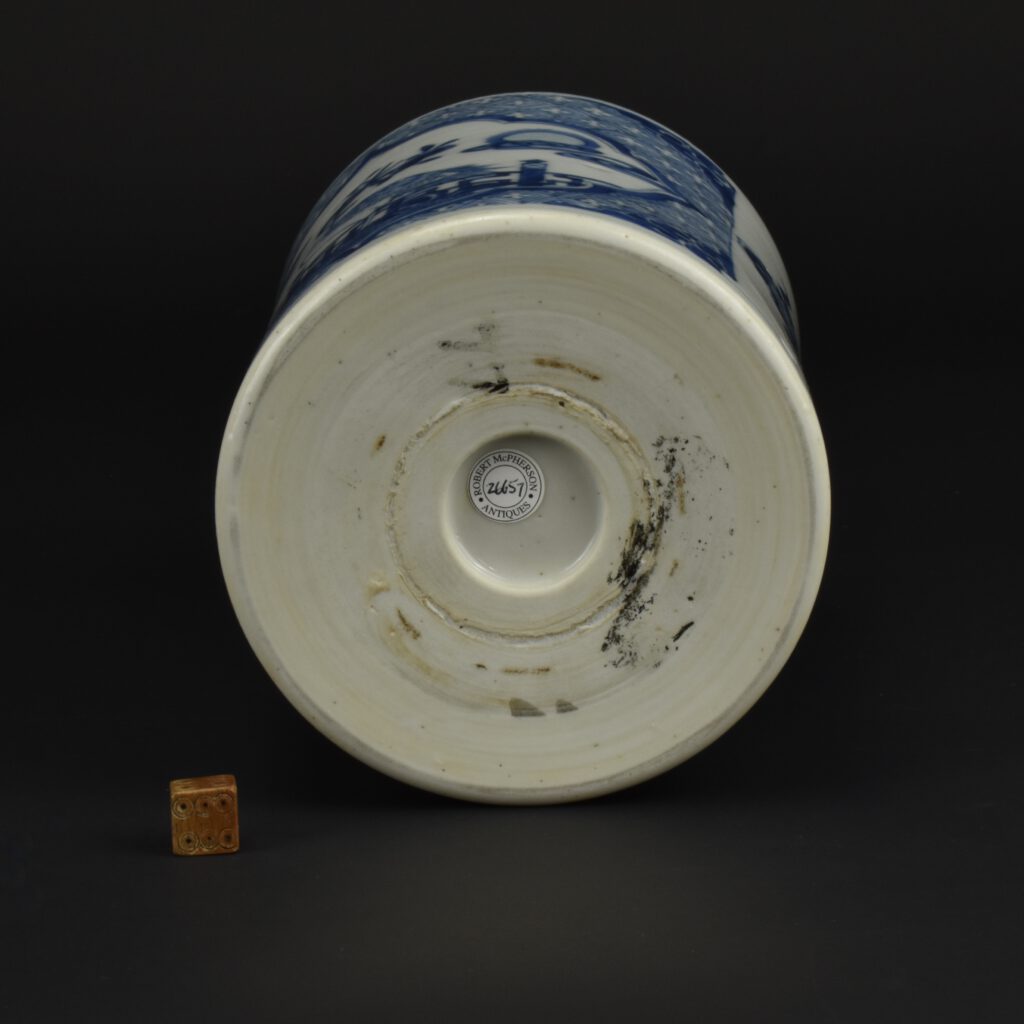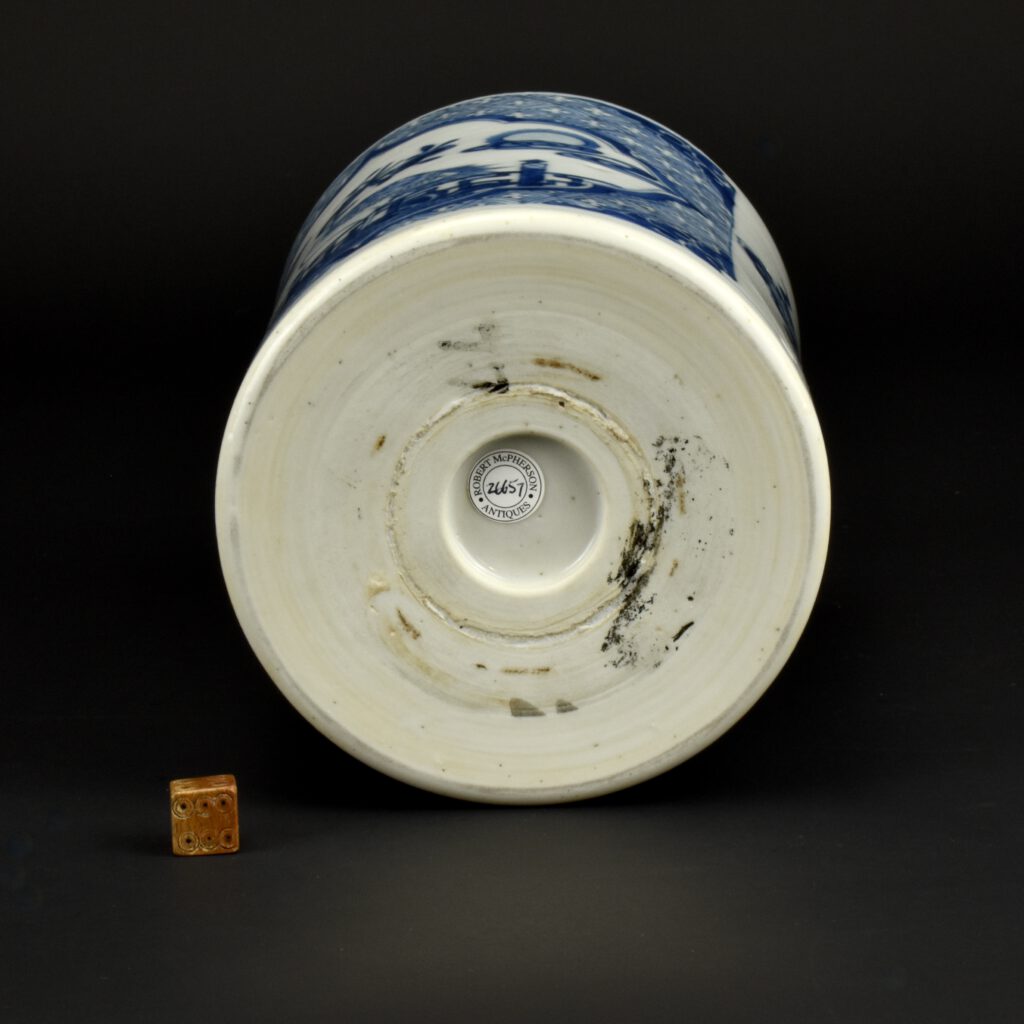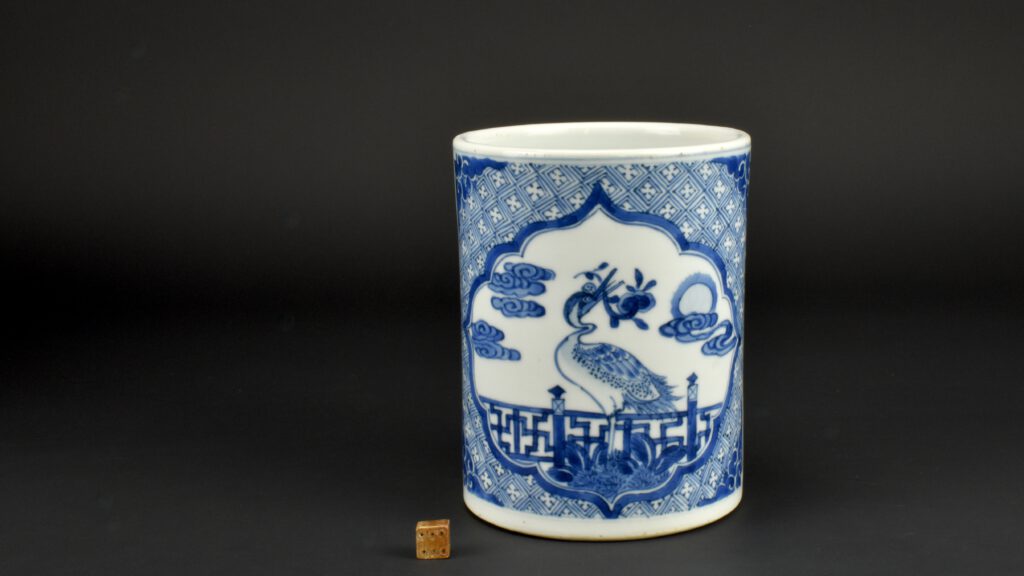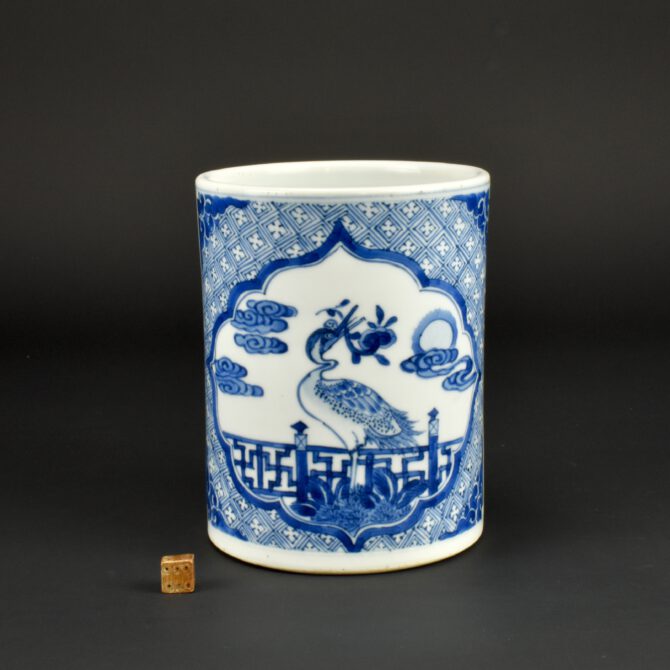
A Fine Kangxi Blue and White Porcelain Brushpot
A Fine Kangxi Blue and White Porcelain Brushpot, Jingdezhen Kilns, Kangxi Period 1662 – 1722. It is well painted in rich tones of cobalt blue. This heavily potted brushpot, referred to as a Bitong in Chinese, is decorated with a crane. The crane symbolizes longevity as well as wisdom, that ties in with Ruyi-fungus in its mouth. A Ruyi sceptre based on the sacred fungus is a symbol of longevity and elderly scholars are often depicted holding them in Chinese art. The crane is depicted in a garden with a balustraded behind fence behind, perhaps indicating a connection with a human scholarly world. This night time scene is set within a bracketed panel laid against a diaper border with stylised clouds in the corners. The other panel has a leaf form reserve against the diaper ground and is decorated with chrysanthemums, it also has cloud designs to the corners. See below for a Japanese book of 1672, based on a Ming book of 1620-1628. This painting manual isn’t a match for the present design, however it is typical of source material used in the 17th century.
See Below For More Photographs and Information.
SOLD
- Condition
- In excellent condition, minor wear to the base.
- Size
- Height 15.3 cm (6 inches). Diameter 12 cm.
- Provenance
- N/A
- Stock number
- 26657
Information
Kangxi Blue and White Brushpots from Our Sold Archive
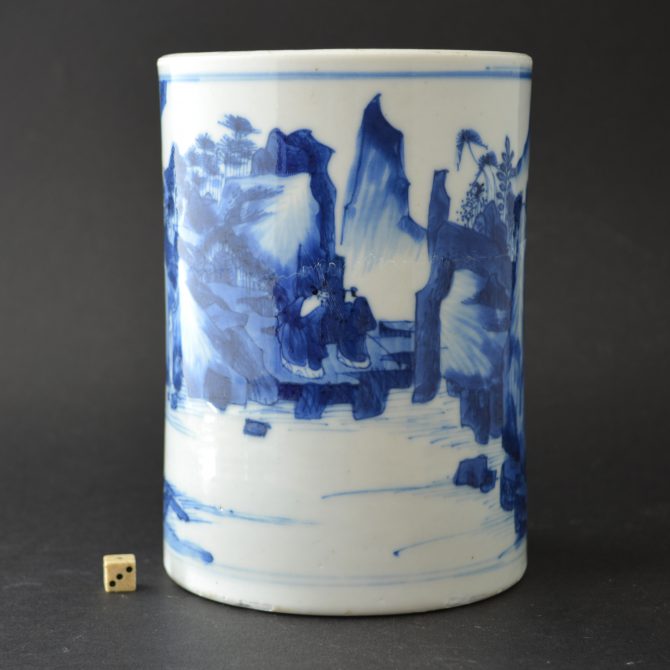
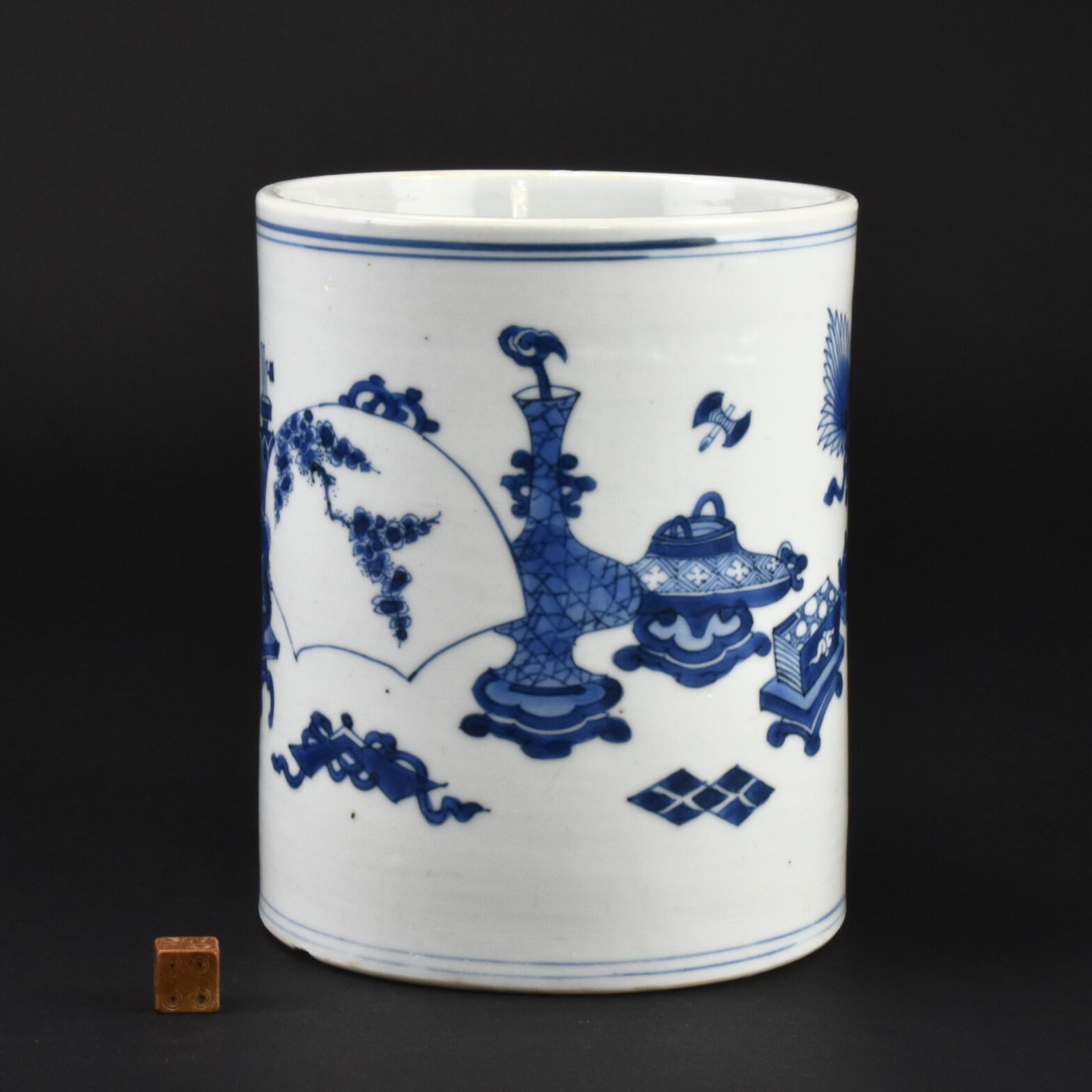
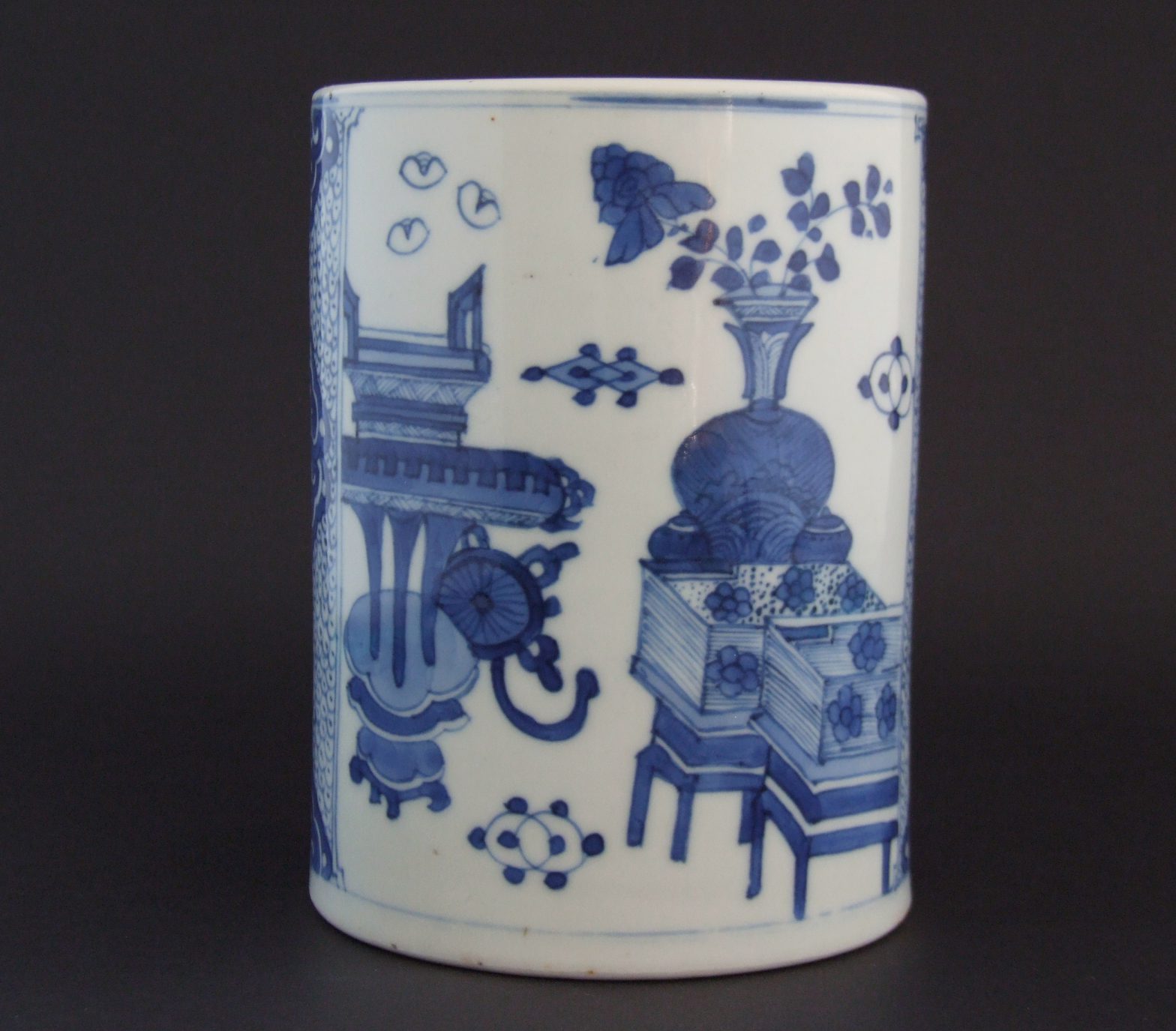
Brushpots Bitong
Bitong or brushpots are not found in 17th or early 18th century European inventories unlike some other ceramic forms which fulfil a specific Chinese function. Blanc de chine `libation cups`, were for example, made for drinking wine in China but they were imported in large numbers to the West. There curious forms appealed to Western tastes and were used in European displays or converted with the addition of a gilt bronze handle to become a bonbon dishes. Brushpots on the other hand seem to have been made exclusively for the Chinese domestic market and perhaps also for Chinese scholars in Southeast Asia. Bitong are an essential part of literati`s desk equipment, what is often referred to as a scholar’s desk. Other scholarly items for the desk might include a brush-rest, inkstone (for grinding the dry ink) a water pot for the water to add to the inkstone, a brush-washer as well as a table screen. Like other scholar`s objects they were made in a diverse range of material from natural gnarled branches of trees, highly polished wood, jade, bamboo, and porcelain to name but a few. Brush-rests were used for keeping the brush from making stains on the scholars' table, in between use while the scholar was working, while brushpots were used for storing the brushes when they were not being used. However, depictions of brushpots clearly show they formed a decorative purpose as well. They can be seen with brushes, feathers, coral as well as other objects.
Bruspots : A Collector's View
The Chinese title of this book reads “The Profound Reflection of Brushpots: A Collector’s Enlightenment” literally, citing reference to the book Imperial Profound & Reflective Encyclopedia commissioned by Emperor Kangxi of the Qing Dynasty, and The Collected Works of Long Ying, published during the reign of Emperor Wanli, Ming Dynasty. The word “Profound” was chosen meticulously to highlight the breadth and variety of the brush pots collected, and the proposition of their illustrations. The author’s intent to make this book an encyclopedia of brush pots was fairly explicit. On the other hand, “reflection” comes from a mirror, which shows how you look and who you are. It represented the collector’s experience in soul-searching and self-reflection during his journey of art appreciation. Text in English and Chinese.
Publisher: CA Book Publishing
ISBN: 9789887440895
Number of pages: 288
Weight: 1626 g
Dimensions: 282 x 239 mm
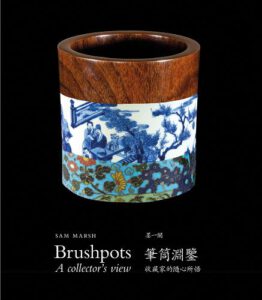
CHINESE PAINTING MANUAL
Sotheby's London, 28th of July 2020 (Sold for 23,750).
Hasshu Gafu (八種画譜). (Bazhong Huapu, 八種畫譜, Chinese). [Eight kinds of painting manual]. Kyoto and Edo, 1672 (Kanbun 12, year of the rat)
FIRST JAPANESE EDITION, 8 volumes, folio (317 x 223mm.), 424 full-page woodcut illustrations, original patterned stitched paper wrappers, printed paper labels, housed in two blue silk chemises, a few repaired wormholes, chemises and wrappers rubbed with occasional slight loss
A FINE COPY OF AN EXTREMELY RARE WORK, of which we have been able to locate only 5 complete copies in the West, and no copy offered at auction in the past 40 years. This is the first Japanese edition of the original Chinese edition Bazhong Huapu, printed between 1620-1628. The original Ming edition of the book is a great rarity both in China and in the Western world.
"The last decades of the Ming Dynasty witnessed the publication of a number of important works illustrating engravings of landscapes and other subjects. These books were designated to meet the desire of the public in order to acquire artistic taste, knowledge and sensibility, a prerequisite of elite status" (Lukacs).
Title and subject of each volume:
Tōshi Gogon (Tangshi Wuyan). Penta-syllabic Tang poems.
Tōshi Shichigon (Tangshi Qiyan). Hepta-syllabic Tang poems.
Tōshi Rokugon (Tangshi Liuyan). Hexa-syllabic Tang poems.
Bai Chiku Ran Giku (Mei Zhu Lan Ju). Plums, bamboo, orchids and chrysanthemums.
Mokuhon Kachō (Muben Huaniao). Flowers and birds.
Sōhon Kashi (Caoben Huashi). Flowers and birds.
Kokon Gafu (Gujin Huapu). Old and contemporary paintings.
Meikō Senpu (Minggong Shanpu). Fan paintings.
![Hasshu Gafu (八種画譜). [Eight kinds of painting manual]. [1672], first Japanese edition, 8 volumes, original wrappers](https://sothebys-md.brightspotcdn.com/dims4/default/f203201/2147483647/strip/true/crop/2000x1581+0+0/resize/385x304!/quality/90/?url=http%3A%2F%2Fsothebys-brightspot.s3.amazonaws.com%2Fmedia-desk%2Fc3%2F88%2F4f33d2a944679d2b701486fcc535%2Fl20401-bjfkh-4.jpg)
